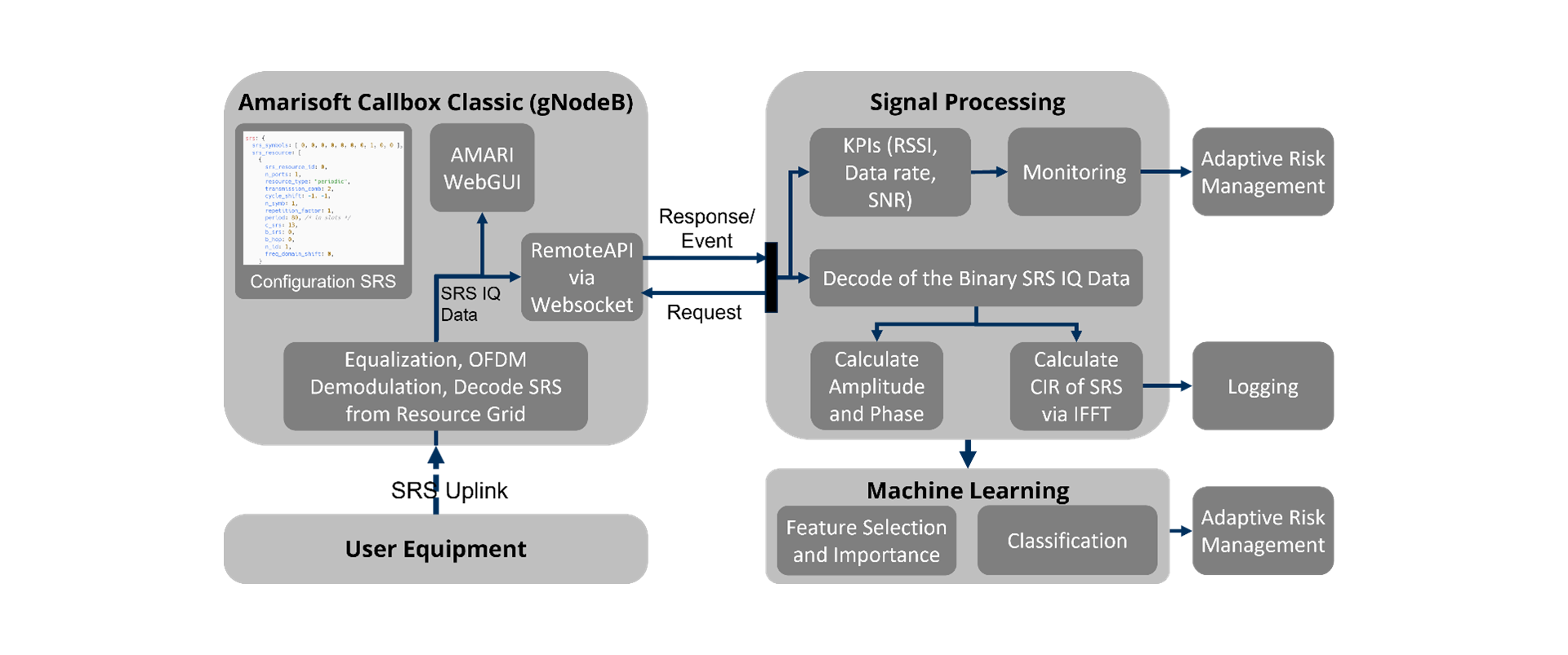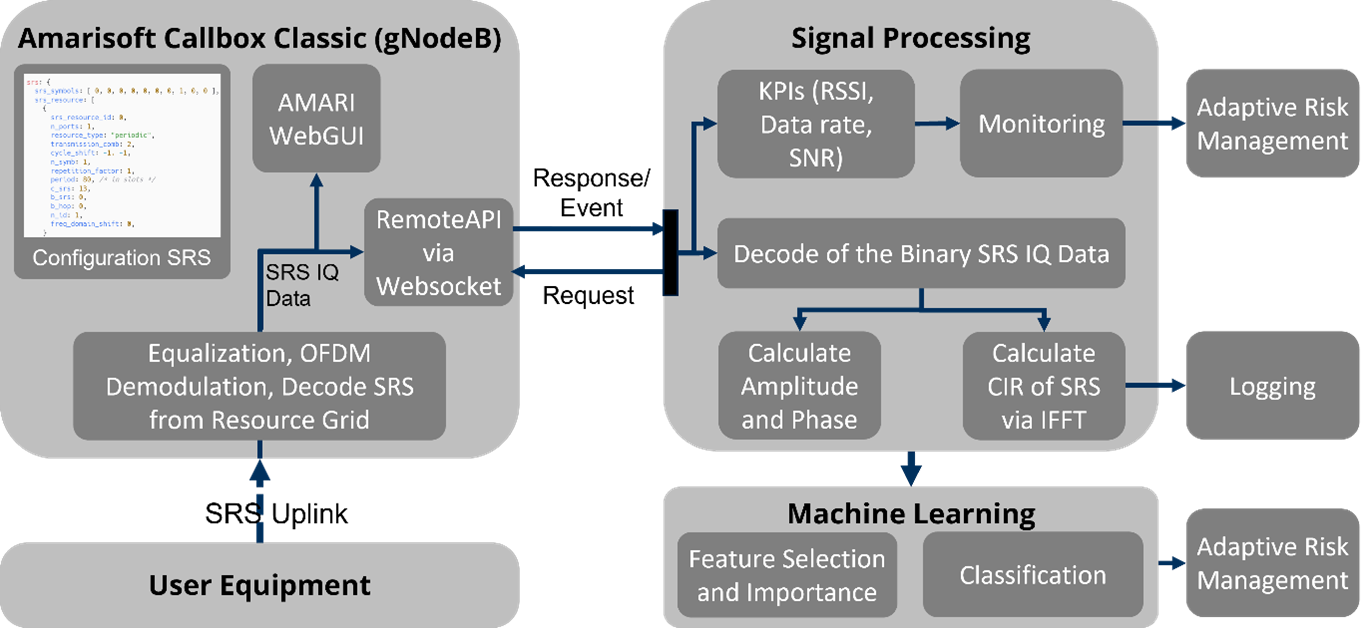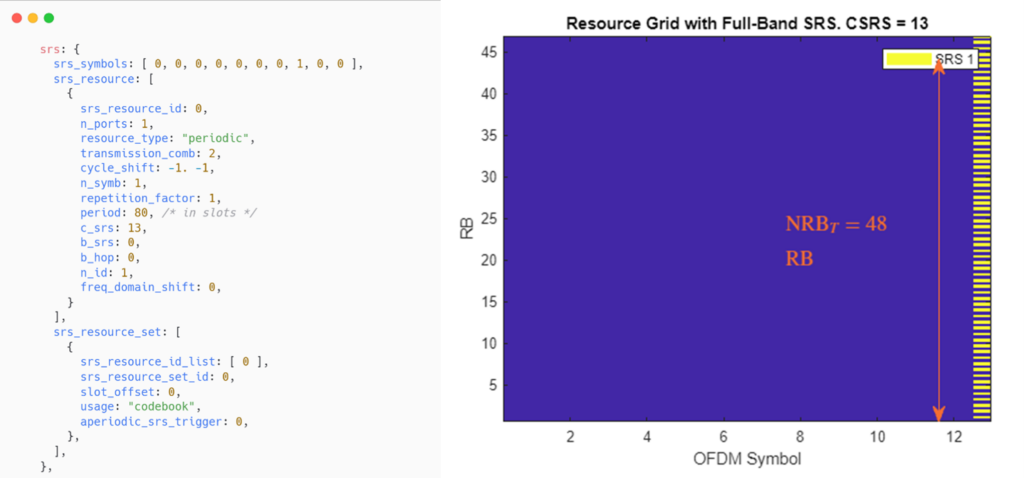Author: Jonas Ninnemann TUD / ITVS
To detect attacks on the physical layer (PHY), access to various signal and channel parameters of the communication signal is necessary. The channel estimation method can be used for this, which extracts information about the propagation of the signal from the transmitter to the receiver. Channel State Information (CSI) allows the PHY parameters to be adjusted to the current channel conditions, which is crucial for reliable communication at high data rates in multi-antenna systems.
Figure 1: Signal processing for channel estimation and monitoring
The CSI can also be used for attacker detection, detecting unexpected changes at the signal level. The PHYSICS project aims to analyze the IQ samples of the 5G NR Sounding Reference Signal (SRS). The channel impulse response (CIR) of the transmission channel can be determined using Inverse Fast Fourier Transformation (IFFT). In addition to detection, this information can be used in the future for physical authentication of the transmission between base station (BS) and user equipment (UE) by exchanging the determined common shared secret.
Figure 2: Configuration of the 5G NR SRS in wideband mode
Specifically, in the project the channel estimation was implemented based on the 5G NR SRS on the basis of an Amarisoft Callbox Classic (see Figure 1). The following implementations were made for this:
- Configuration of the SRS in wideband mode (see Figure 2)
- Access to the SRS via RemoteAPI
- Decode the Binary SRS IQ data (see Figure 3)
- Calculation of amplitude, phase and CIR (see Figure 3)
- Provision of data for detection using ML algorithms
Figure 3: IQ data and CIR of the 5G NR SRS
In the project, we then examined various machine learning (ML) methods to enable attacker detection. For this purpose, corresponding features (mean, median, var, skewness, kurtosis) are extracted from the IQ data and the CIR and fed to a classifier.






